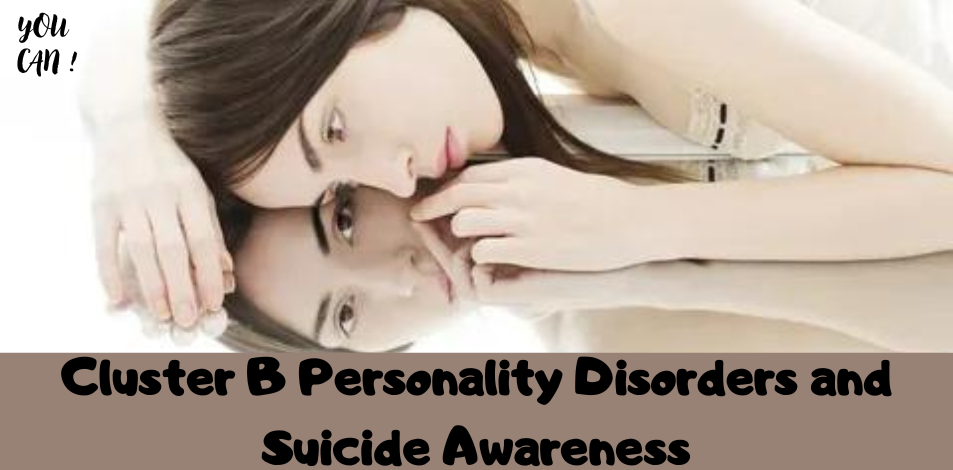
Type B personality disorders, which are characterized by dramatic, emotional, or erratic behaviors, include borderline personality disorder (BPD), narcissistic personality disorder (NPD), antisocial personality disorder (ASPD), and histrionic personality disorder (HPD). Individuals with these disorders often face significant emotional and personal challenges, which can increase their risk for suicidal thoughts and behaviors. This article explores the relationship between Type B personality disorders and suicide, emphasizing the importance of awareness and intervention.
Understanding Type B Personality Disorders
Borderline Personality Disorder (BPD)
Key Features:
Intense and unstable emotions
Fear of abandonment
Impulsive and risky behaviors
Chronic feelings of emptiness
Unstable relationships
Suicide risk:
Individuals with BPD are at high risk for suicide, with estimates suggesting that up to 10% may die by suicide.
Suicidal behaviors, including self-harm and suicide attempts, are common in borderline personality disorder, often in response to intense emotional pain or interpersonal conflicts.
Narcissistic Personality Disorder (NPD)
Key Features:
Grandiosity and self-importance
Inordinate need for admiration
Lack of empathy
Entitlement and arrogance
Exploitative behaviors
Suicide Risk:
While individuals with NPD may not appear to be at risk for suicide, their risk can increase dramatically when they experience a narcissistic injury—events that shatter their self-esteem and inflated self-image.
Feelings of shame, humiliation, and perceived failure can lead to suicidal thoughts and behaviors.
Antisocial Personality Disorder (ASPD)
Key Features:
Disrespect for the rights of others
Deceit and manipulation
Impulsivity and irresponsibility
Aggression and lack of remorse
Violation of social norms
Suicide Risk:
People with ASPD are at high risk for suicide, especially those with a history of substance abuse or other co-occurring mental health disorders.
Related : Victim to a Sociopath? Level Up or Die
Impulsivity and a tendency to engage in risky behaviors can contribute to suicidal acts.
Historic Personality Disorder (HPD)
Key Features:
Excessive emotionality and attention-seeking
Dramatic behavior
Surface and rapidly changing emotions
Inappropriately seductive or provocative behavior
Intense need for approval
Suicide Risk:
Individuals with a histrionic personality disorder may display suicidal behaviors or threats as a way to gain attention or manipulate others.
Their emotional instability may also contribute to real suicidal thoughts, especially when their need for attention and approval is not met.
Recognizing the Warning Signs
Common Warning Signs of Cluster B Disorders
Expressing hopelessness: Statements that indicate feelings of hopelessness, worthlessness, or lack of a reason to live.
Increasing isolation: Withdrawing from friends, family, and social activities.
Changes in behavior: Sudden changes in mood, behavior, or personality.
Risk behaviors: Engaging in risky or self-destructive behaviors, such as drug abuse or reckless driving.
Giving away possessions: Giving away valuables or arranging things after death.
Self-harm: Engaging in self-harming behaviors, such as cutting or burning oneself.
Prevention and intervention
Mental health support
Treatment: Psychotherapy, such as dialectical behavior therapy for borderline personality disorder, can be very effective in reducing suicidal thoughts and behaviors. Cognitive behavioral therapy (CBT) and other therapies can also be helpful.
Medications: Psychiatric medications may be prescribed to help manage symptoms and co-occurring disorders, such as depression or anxiety.
Crisis Intervention: Immediate intervention, such as calling a crisis hotline or seeking emergency medical care, is critical for individuals experiencing acute suicidal crises.
Building a Supportive Environment
Awareness and Education: Increasing awareness and understanding of Type B Personality Disorder can reduce stigma and encourage individuals to seek help.
Related : Two Guaranteed Things That Will Happen to You if You’re an Authentic Person
Support Networks: Family, friends, and community support can provide emotional support and help individuals feel connected and valued.
Safety Planning: Developing a safety plan with a mental health professional can help individuals identify coping strategies and resources to use during times of crisis.
The Role of Loved Ones
How to Help
Listening and Validation: Offer a listening ear and validate the individual’s feelings without judgment.
Encouraging Professional Help: Encourage them to seek professional help and offer assistance in finding resources or making appointments.
Staying in Touch: Maintain regular contact and check in on their safety.
Removing Means: If there is an immediate risk of suicide, remove any means of self-harm, such as firearms or medications, and seek emergency help.
Self-care for caregivers
Seek support: Caregivers should also seek support for themselves, whether through therapy, support groups, or talking with trusted friends and family.
Set boundaries: It is important to set healthy boundaries to protect one’s mental health while providing support.
Practice self-care: Engage in activities that promote personal well-being and relieve stress.
Conclusion
Individuals with type B personality disorders face significant challenges that can increase the risk of suicidal thoughts and behaviors. Understanding the relationship between these disorders and suicide, recognizing the warning signs, and knowing how to provide effective support are critical steps in prevention and intervention. By raising awareness, providing compassionate support, and encouraging professional help, we can make a difference in the lives of those affected by these complex and often poorly understood disorders.





[…] Related : Cluster B Personality Disorders and Suicide Awareness […]
Well done!searc h